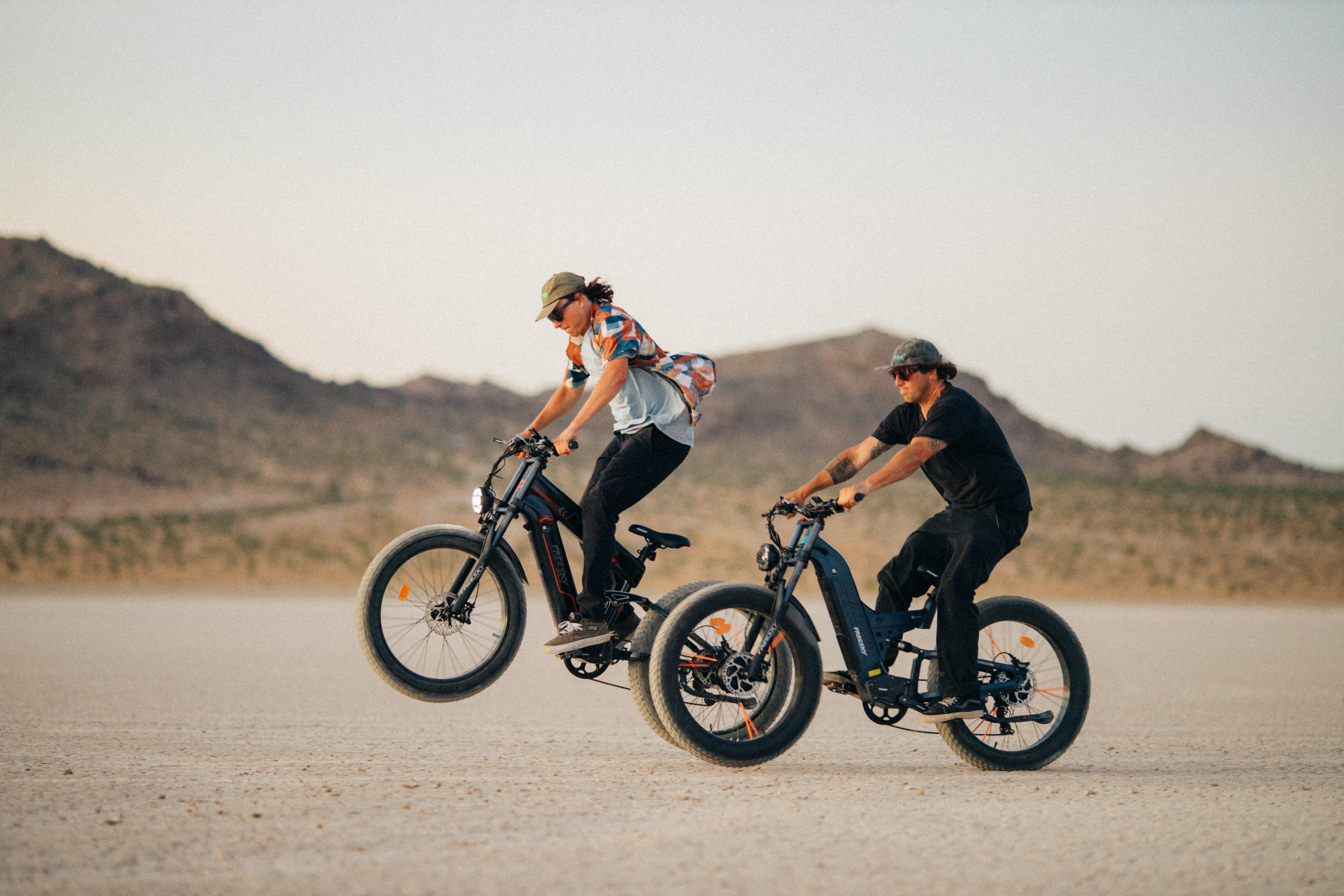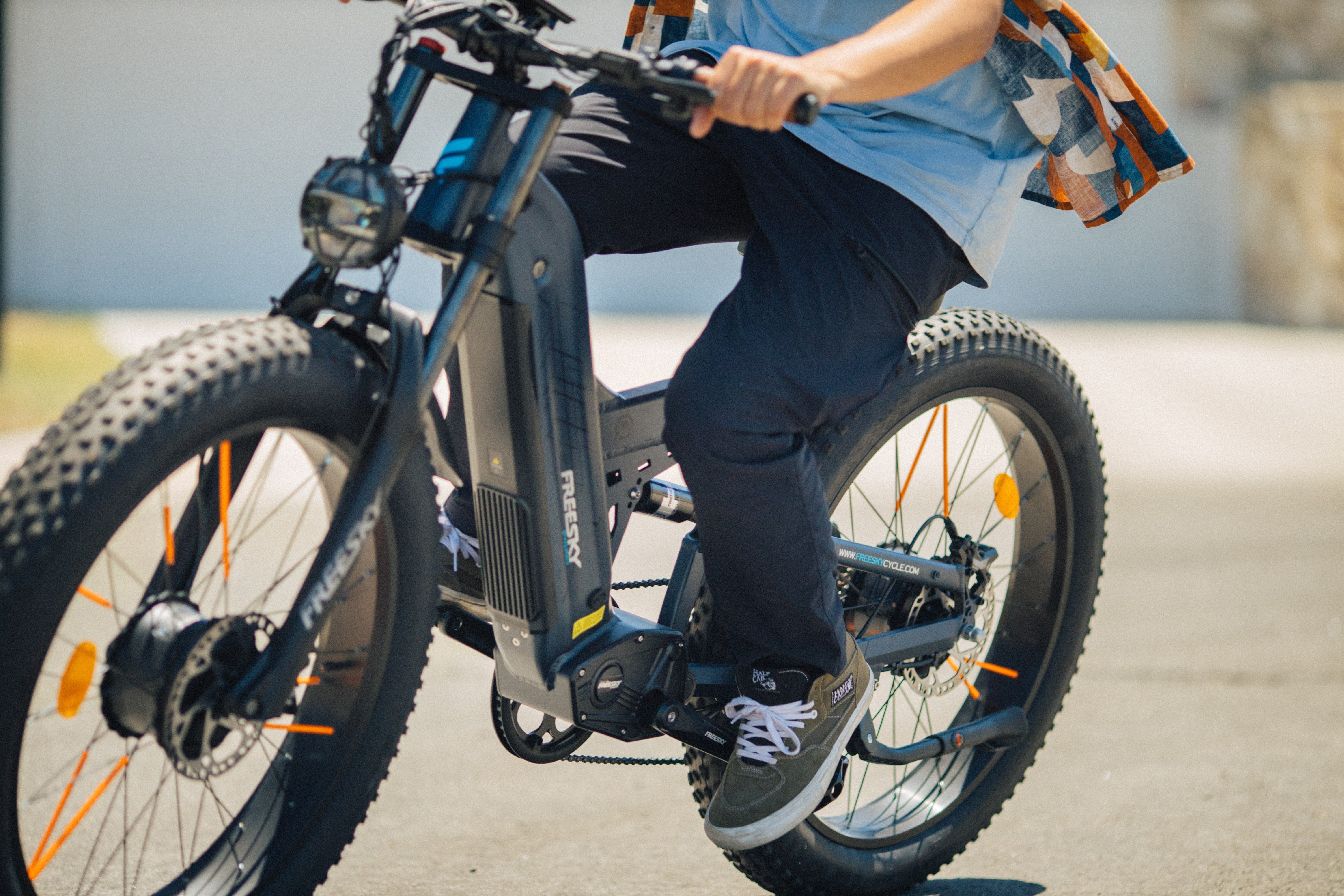FREESKY Blogs
Stay updated with the latest news, tips, and insights on e-bikes, technology, and sustainable riding through the FREESKY blog.
There's no item in your cart.
You May Also Like
You're Saving €0,00
Shipping, taxes, and discount codes calculated at checkout.All Topics


Rainy Day Rides: Protecting Your Electric Bike and Staying Safe
Feb 03, 2025 11:08
Riding an electric bike in the rain might seem daunting, but with the right precautions, it's perfectly manageable. Whether you're commuting to work or enjoying a weekend ride, understanding how rain affects your battery-assist bike can help you stay safe and protect your investment. The Resilience of Electric Bikes Modern electric bikes are designed with resilience in mind, especially when it comes to weather. Most electric bicycles, including those equipped with a hub motor, are built to withstand a fair amount of moisture. The components, such as the battery and motor, are typically well-sealed to prevent water ingress. However, while brief exposure to rain is usually fine, prolonged exposure or submerging your bike in water can cause damage. Protecting Your Battery Assist Bike The battery is the heart of your electric bike, and taking care of it is crucial, especially in wet conditions. When riding in the rain, it's important to make sure the battery is securely attached and that all connections are sealed. Some riders opt for additional protective covers for their batteries to prevent moisture from seeping in. After your ride, it's a good practice to dry the battery and other electrical components to avoid long-term damage. The Role of the Electric Bicycle Hub Motor The hub motor on an electric bicycle is another critical component that needs attention in wet weather. Like the battery, hub motors are generally well-sealed, but they aren't completely waterproof. Riding through puddles or in heavy rain can still pose risks. If you're planning to ride frequently in wet conditions, consider investing in a bike with a high IP rating for its motor, which indicates better protection against water and dust. High-Security Features for Peace of Mind Riding in the rain isn't just about protecting your bike from water—it's also about ensuring your safety. High-security features on your electric bike, such as reliable brakes, bright lights, and non-slip tires, are essential in wet conditions. Make sure your bike is equipped with these features to maintain control and visibility when the roads are slick. Post-Ride Care After riding in the rain, it's essential to take some time for post-ride care. Wipe down your bike, especially the battery and motor, to remove any moisture. Check for any signs of water damage, such as condensation inside the battery casing. Regular maintenance, like lubricating the chain and checking the brakes, will also help keep your bike in top condition for the next ride. So, can you ride an electric bike in the rain? Absolutely! With the right precautions and care, your battery assist bike can handle wet conditions just fine. Just remember to protect your electric bicycle's hub motor, maintain high-security features, and perform regular maintenance to ensure a smooth and safe ride, rain or shine.
Read More

Is Step-through Frame Safe?
Jan 20, 2025 11:15
The question of whether a step-through frame is safe often arises when considering bicycles for various purposes, especially among those who are new to cycling or those who prioritize comfort and ease of use. Step-through frames, also known as "ladies' bikes" or "comfort bikes," are designed with a lower, more accessible top bar that allows riders to mount and dismount the bike without having to swing a leg over a high crossbar. This design feature is particularly appealing to those who may have limited flexibility, are wearing skirts or dresses, or simply prefer a more convenient riding experience. When it comes to safety, the step-through frame design does not inherently compromise the structural integrity of the bicycle. In fact, many modern step-through frames are constructed from high-quality materials like aluminum or carbon fiber, which are lightweight but extremely durable. The design itself may offer additional stability, as the lower center of gravity can make the bike easier to balance, especially for beginners. However, safety is not solely determined by the frame design but also by factors such as the quality of the components, the condition of the bike, and the riding habits of the user. A well-maintained step-through bike with quality brakes, tires, and handlebars can be as safe as any other type of bicycle. Riders should always ensure that their bikes are properly adjusted to fit their body size and riding style, and they should practice safe riding habits, such as wearing a helmet, obeying traffic rules, and riding at a safe speed. It's also worth noting that step-through frames may not be the best choice for certain types of riding, such as mountain biking or high-speed road cycling, where a more traditional frame design may offer greater rigidity and responsiveness. But for casual riding, commuting, or leisurely activities, a step-through frame can provide a safe and comfortable riding experience. In conclusion, the safety of a step-through frame bicycle depends on multiple factors, including the quality of the bike, the condition of its components, and the riding habits of the user. While the design itself does not compromise safety, it is essential to ensure that the bike is suitable for the intended use and that the rider practices safe riding techniques. With proper care and attention, a step-through frame bike can be a safe and enjoyable choice for many riders.
Read More